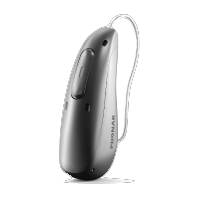How to Relieve Ear Pressure: Effective Methods for Comfort and Hearing

That uncomfortable fullness in your ears—the sensation that your ears need to “pop”—is a common experience for many people. Whether you’re dealing with a cold, allergies, flying on an airplane, or have a hearing aid that’s not fitting quite right, ear pressure can range from a minor nuisance to a significant source of pain and hearing difficulty. As hearing healthcare professionals, we often help patients find relief from ear pressure and understand its underlying causes. In this comprehensive guide, we’ll explore what causes ear pressure, how to relieve it safely, and when it’s time to seek professional help.
Understanding Ear Pressure and the Eustachian Tube
To understand ear pressure, we need to first understand the role of the Eustachian tubes. These small but vital passageways connect your middle ear to the back of your throat and serve three critical functions, according to the Cleveland Clinic:
- Draining fluid from your middle ear to reduce infection risk
- Equalizing air pressure between your middle ear and the external environment
- Protecting your middle ear from pathogens by remaining closed when not in use
Under normal circumstances, your Eustachian tubes open briefly when you yawn, swallow, or chew, allowing air pressure to equalize on both sides of your eardrum. However, when these tubes become blocked or don’t function properly—a condition known as Eustachian tube dysfunction (ETD)—pressure can build up in your middle ear, creating that familiar feeling of fullness or blockage.
Common Causes of Ear Pressure
1. Altitude Changes
One of the most common causes of ear pressure is rapid altitude change, such as during air travel, driving through mountains, or scuba diving. As explained by the Mayo Clinic, when you experience a change in altitude, the air pressure around you changes faster than your Eustachian tubes can react, creating an imbalance of pressure between your middle ear and the environment.
2. Colds, Allergies, and Sinus Problems
Upper respiratory infections, allergies, and sinus problems can cause inflammation and congestion that block the Eustachian tubes. According to Johns Hopkins Medicine, this blockage prevents normal air flow and fluid drainage, leading to pressure buildup in the middle ear.
3. Fluid Buildup in the Middle Ear
Sometimes fluid can accumulate in the middle ear, especially following an infection. This condition, known as serous otitis media, can create persistent pressure and even temporary hearing loss if not addressed.
4. Earwax Buildup
While earwax itself doesn’t cause pressure within the middle ear, excessive earwax can block the ear canal and create a feeling of fullness or pressure in the outer ear. This can sometimes be confused with middle ear pressure.
5. Hearing Aid Use
For those who wear hearing aids, sometimes an improperly fitted device can create a sensation of pressure in the ear canal. This is particularly common with in-the-ear or completely-in-canal models.
Effective Methods to Relieve Ear Pressure
Fortunately, there are many safe and effective ways to relieve ear pressure. Here are some methods recommended by hearing health professionals:
1. Swallowing, Yawning, and Chewing Techniques
Simple actions like swallowing, yawning, or chewing gum can help open your Eustachian tubes and equalize pressure. Research published by Verywell Health indicates that these natural techniques are often the first line of defense against ear pressure, especially during air travel.
- Swallowing: Sip water or other beverages frequently
- Yawning: Open your mouth wide, even forcing a fake yawn if necessary
- Chewing: Chew gum or suck on hard candy to promote frequent swallowing
2. The Valsalva Maneuver
The Valsalva maneuver is a technique that can help open blocked Eustachian tubes. According to Michigan ENT & Allergy Specialists, here’s how to perform it safely:
- Take a deep breath
- Close your mouth
- Pinch your nostrils closed with your fingers
- Gently blow as if you’re blowing your nose, but keep your nostrils pinched
- Stop if you feel pain
Important Safety Note: The Valsalva maneuver should be performed gently. Blowing too forcefully can damage your eardrums. According to Mercy Health, you should avoid this technique if you have high blood pressure, heart conditions, or are at risk for stroke.
3. The Toynbee Maneuver
The Toynbee maneuver is another effective technique for relieving ear pressure:
- Pinch your nostrils closed
- Close your mouth
- Swallow
This maneuver creates movement that can help open the Eustachian tubes and is considered by some experts to be safer than the Valsalva maneuver for those with certain health conditions.
4. Nasal Decongestants and Antihistamines
When ear pressure is caused by nasal congestion or allergies, over-the-counter medications can help. The American Academy of Family Physicians notes that decongestants can reduce swelling in the nasal passages and around the Eustachian tubes, while antihistamines can help manage allergy symptoms that contribute to ear pressure.
However, it’s important to note that these medications should be used cautiously and only for short periods, as prolonged use can sometimes make congestion worse.
5. Warm Compress
Applying a warm, damp cloth to the ear can help relieve pain associated with ear pressure. The gentle heat may also help improve blood circulation and reduce inflammation around the Eustachian tubes.
6. Stay Hydrated
Drinking plenty of water helps thin mucus secretions, making it easier for fluid to drain from the Eustachian tubes. Staying well-hydrated is particularly important during air travel and when fighting a cold or allergies.
7. Specialized Devices
For those who experience frequent ear pressure issues, especially during flying, there are specialized devices that can help:
- EarPlanes: Special earplugs designed to help regulate air pressure during flights
- Otovent: A balloon device that helps open the Eustachian tubes through controlled pressure
- EarPopper: A prescription device that delivers controlled air pressure to the nasal passage
Relief for Hearing Aid Users
If you wear hearing aids and experience ear pressure, consider these specific tips:
- Check the fit: Make sure your hearing aids or earmolds fit properly. Improperly fitted devices can create a sensation of pressure or fullness.
- Give your ears a break: Remove your hearing aids periodically throughout the day to allow your ears to “breathe.”
- Keep the vents clear: If your hearing aids have vents, ensure they’re not blocked with earwax or debris.
- Consult your audiologist: Your hearing healthcare professional can make adjustments to your devices to improve comfort and reduce pressure sensations.
When to Seek Professional Help
While many cases of ear pressure can be managed at home, some situations warrant professional attention. According to Texan ENT, you should consult a healthcare professional if you experience:
- Severe or persistent ear pain
- Pressure that doesn’t respond to home remedies after 1-2 weeks
- Hearing loss that doesn’t improve after the pressure is relieved
- Dizziness or vertigo
- Fluid drainage from the ear
- Fever along with ear pressure
- Recurring episodes of ear pressure
These symptoms could indicate a more serious condition that requires medical treatment, such as a middle ear infection, a perforated eardrum, or chronic Eustachian tube dysfunction.
Medical Treatments for Chronic Ear Pressure
If you experience chronic or severe ear pressure that doesn’t respond to home remedies, your healthcare provider might recommend one of the following treatments:
1. Prescription Medications
For ear pressure caused by allergies or inflammation, your doctor might prescribe:
- Stronger decongestants
- Nasal steroids
- Antibiotics (if an infection is present)
2. Myringotomy and Ear Tubes
For persistent fluid buildup in the middle ear, a minor surgical procedure called a myringotomy may be performed. During this procedure, a small incision is made in the eardrum to allow fluid to drain. In some cases, small tubes are inserted to maintain drainage and airflow, as described by Medical News Today.
3. Balloon Dilation of the Eustachian Tube
A relatively new procedure involves inserting a small balloon into the Eustachian tube via the nose. The balloon is then inflated to widen the tube, improving its function. This procedure is typically considered for those with chronic Eustachian tube dysfunction who haven’t responded to other treatments.
Preventing Ear Pressure
While it’s not always possible to prevent ear pressure, there are steps you can take to reduce its occurrence:
- During air travel: Stay awake during takeoff and landing, chew gum, swallow frequently, and consider using EarPlanes or similar devices.
- For allergies: Take allergy medications as prescribed and avoid known allergens when possible.
- For colds and congestion: Stay hydrated, use saline nasal sprays, and manage symptoms promptly.
- For hearing aid users: Ensure proper fit, keep devices clean, and follow your audiologist’s recommendations for wear time.
Conclusion
Ear pressure can be uncomfortable and sometimes painful, but in most cases, it can be effectively managed with simple home remedies. By understanding the causes and implementing the appropriate relief techniques, you can minimize discomfort and prevent complications.
Remember that while occasional ear pressure is normal, persistent or severe symptoms should be evaluated by a healthcare professional. Your hearing health is an important part of your overall well-being, and addressing ear pressure promptly can help prevent more serious issues down the road.
Turning Life up Through Better Hearing
For over 30 years, California Hearing Center has been helping people improve their lives through better hearing. If you’re experiencing persistent ear pressure or have concerns about your hearing health, our team of experienced audiologists is here to help. We provide comprehensive hearing evaluations, expert advice on ear care, and specialized solutions for hearing aid users.
Or call us at (650) 342-9449
This article is for informational purposes only and does not constitute medical advice. Always consult with a qualified healthcare professional about your specific situation.









